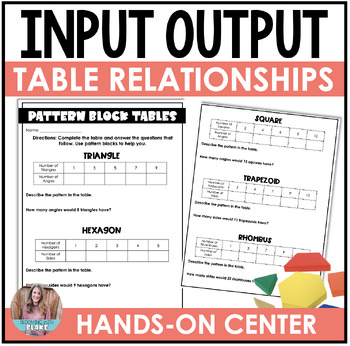- PDF
Description
Are you looking for multiplication input output tables practice for your students? This hands-on math station or center activity is perfect for your students to understand the multiplication relationships and patterns in tables using manipulatives. This activity is engaging and perfect for independent discovery work or partner work during your multiplication unit.
Students will have the opportunity to use pattern blocks to create a table and analyze the relationships and patterns within the table. Manipulatives help students take the abstract concept and make it concrete. Students will count the number of sides or angles on a pattern block and then use multiplication to determine how many sides or angles would be on X number of blocks. This practice with input output tables is sure to have your students mastering the function table relationships in no time!
What's Included?
- Space for your students to complete a table for a triangle, hexagon, square, trapezoid, and rhombus pattern blocks
- Most multiplication computations are facts 1-12. Some of the challenge will ask them to do two-digit times one-digit with 15 and 22. Pattern blocks could be used to scaffold this!




